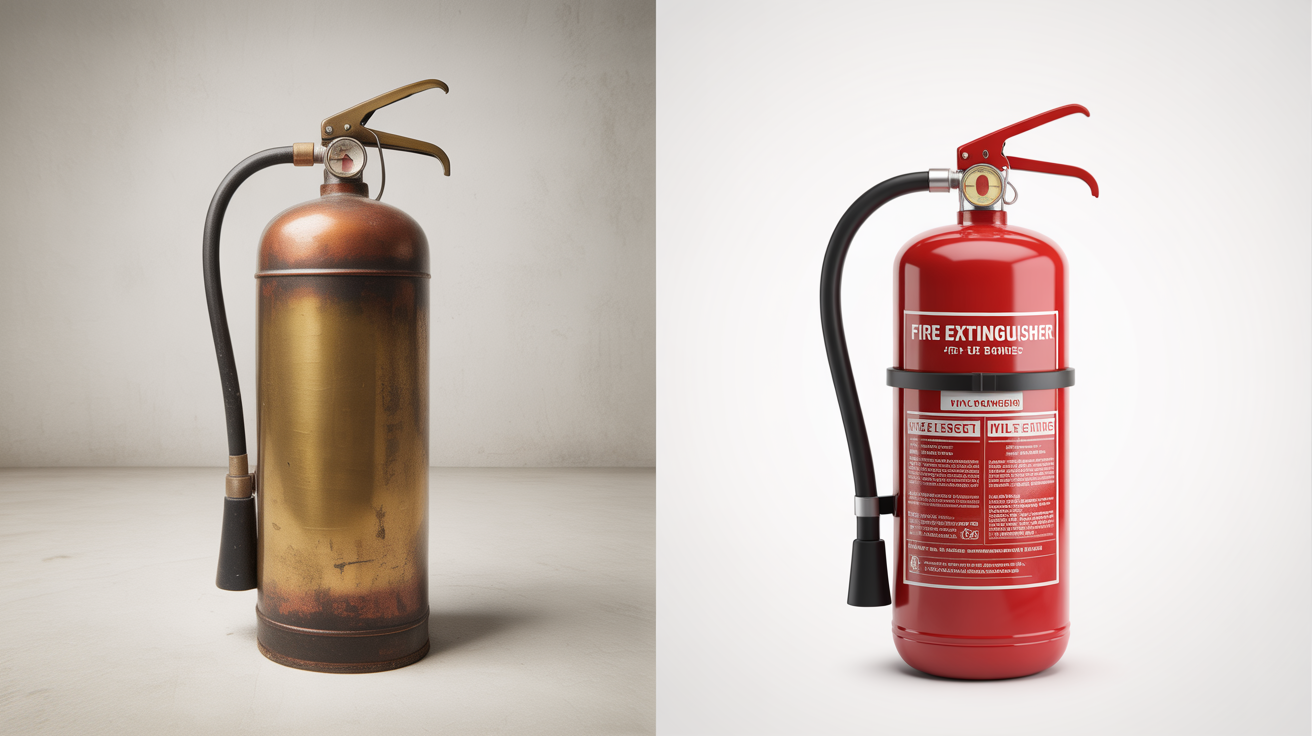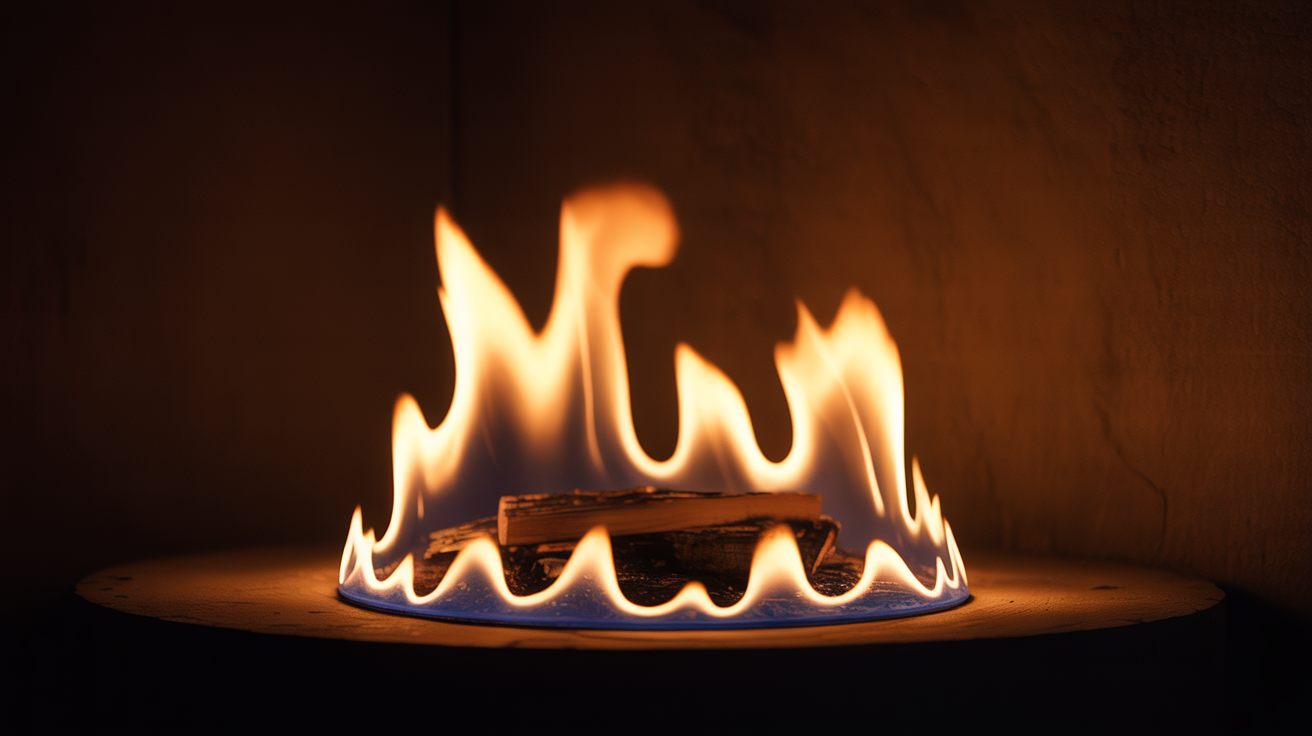Why Traditional Fire Extinguishers Are Becoming Obsolete
Analysis of traditional fire extinguisher limitations and the emergence of next-generation fire safety technology. Understanding the shift in fire protection standards.

Critical Limitations of Traditional Extinguishers
Traditional ABC fire extinguishers have been the standard for home fire safety since the 1940s. But as fire risks evolve and technology advances, these heavy, complex devices are showing their age. Here's why more families are switching to next-generation fire safety products.

Problem #1: The Training Barrier
The PASS Technique
Traditional fire extinguishers require users to remember and execute the PASS technique under extreme stress:
- Pull the pin
- Aim at the base of the fire
- Squeeze the lever
- Sweep side to side
Reality Check: Studies show that during an actual fire emergency, most people freeze, forget steps, or aim incorrectly. Muscle memory only develops with hands-on training, which 90% of homeowners have never received.
Problem #2: Weight and Accessibility
Physical Limitations
- 5-10 pounds: Standard ABC extinguisher weight makes it difficult for children, elderly, or mobility-impaired individuals to use
- Two-hand operation: Requires significant grip strength to pull pin and squeeze lever
- Mounting height issues: If mounted high for safety, may be unreachable during emergency
- Upright-only operation: Won't work if tipped or upside down
Problem #3: The Cleanup Nightmare
ABC Powder Damage: The most common type of fire extinguisher uses monoammonium phosphate powder, which causes extensive secondary damage:
- • Corrosive to metal surfaces and electronics
- • Extremely difficult to clean from fabrics and porous materials
- • Can cause permanent damage to computers, TVs, and appliances
- • Requires professional cleaning services ($1,500-$5,000+)
- • May trigger respiratory issues if inhaled
Real Homeowner Experience
"I used my ABC extinguisher on a small kitchen fire. The fire was out in seconds, but the powder coated everything within 20 feet. My entire kitchen, including inside cabinets, required professional cleaning. The $29 extinguisher resulted in $3,200 in cleanup costs."
— Jennifer M., Denver, CO
Problem #4: Limited Modern Fire Coverage
Fire risks have evolved dramatically, but traditional extinguishers haven't kept pace:
Fire Class Coverage Gaps
Class A (Paper/Wood): ✓ Covered
Class B (Flammable Liquids): ✓ Covered
Class C (Electrical): ✓ Covered
Class K (Cooking Oil): ✗ NOT Covered
Requires separate Class K extinguisher
Lithium Battery Fires: ✗ NOT Covered
The fastest-growing fire risk in homes
The Lithium Battery Problem: Traditional ABC extinguishers can actually worsen lithium battery fires by causing thermal runaway. These fires require specialized suppression agents that weren't needed when ABC standards were created in the 1940s.
Problem #5: Maintenance and Expiration
Ongoing Requirements
- Monthly inspections: Check pressure gauge, verify accessibility
- Annual professional inspection: Required by many insurance companies
- 6-12 year lifespan: Must be replaced or professionally recharged
- Single use: Even partial discharge requires professional recharge ($30-$60)
Reality: Most homeowners never inspect their extinguishers, leading to millions of expired or malfunctioning units sitting in homes, providing a false sense of security.
Next-Generation Fire Safety Technology
Modern fire safety products address all the limitations of traditional extinguishers while adding capabilities for modern fire risks:
Advantages of Modern Systems
- No training required: Simple point-and-spray operation
- Lightweight: Can be used by anyone, including children and elderly
- 360° spray: Works at any angle, even upside down
- Zero cleanup: Non-toxic, biodegradable, leaves no residue
- Broader coverage: Handle 10+ fire types including lithium batteries
- Longer shelf life: 5+ years with no maintenance required
- Safer for users: No risk of powder inhalation or skin irritation
Cost Comparison Over 10 Years
Traditional ABC Extinguisher:
- • Initial cost: $35-$70
- • Annual inspection: $25-$50/year
- • Recharge after use: $30-$60
- • Potential cleanup: $1,500-$5,000
- Total: $285-$570 (+ cleanup risk)
Modern Fire Safety Product:
- • Initial cost: $30-$40
- • Maintenance: $0
- • Replacement after use: $30-$40
- • Cleanup cost: $0
- Total: $60-$80 (over 10 years)
Side-by-Side Comparison
| Feature | Traditional ABC | Modern Systems |
|---|---|---|
| Training Required | ||
| Weight | 5-10 lbs | 1-2 lbs |
| Cleanup Required | ||
| Works Upside Down | ||
| Lithium Battery Fires | ||
| Maintenance Required | Monthly | None |
| Fire Types Covered | 3-4 | 10+ |
The Future of Fire Safety
Traditional fire extinguishers served us well for decades, but they're increasingly out of step with modern fire risks and user needs. Next-generation fire safety products eliminate the training barrier, reduce costs, prevent secondary damage, and protect against contemporary threats like lithium battery fires.
While traditional extinguishers still have a place in commercial settings with trained personnel, homeowners now have better options that are easier to use, more effective, and far less likely to cause expensive collateral damage.
The question isn't whether to protect your family from fire—it's whether to do it with 80-year-old technology or solutions designed for today's risks.